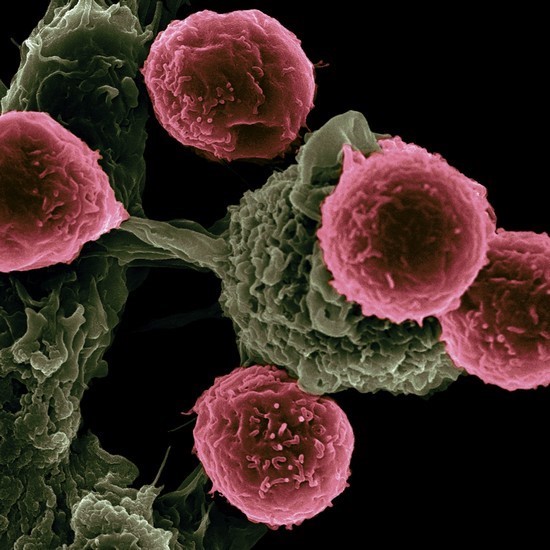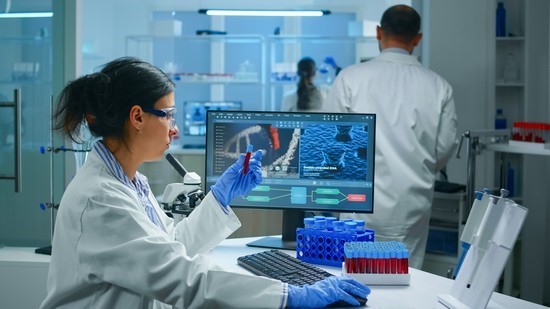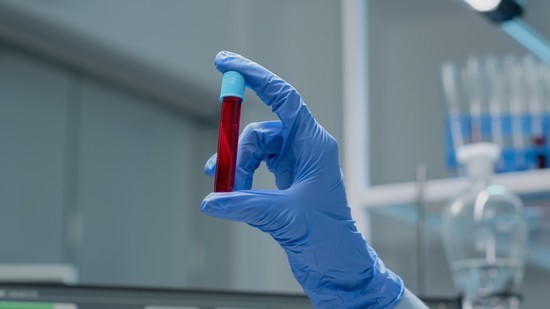September is blood cancer awareness month.
Blood cancer is used to refer to three
main types of cancer: leukemia, lymphoma, and myeloma. Unfortunately, these
cancers are quite prevalent in the world, even with modern medicine, and Jordan
is no exception.
اضافة اعلان
A 2017 report
released by the Ministry of Health found that lymphoma is the third most common
(7.6 percent) form of cancer in Jordanian adults and leukemia is the eighths
(3.6 percent). Even more concerning is the prevalence of blood cancers among
children. Leukemia, at 26.4 percent, is by far the most common form of cancer
among Jordanian children, and lymphoma is third (12.3 percent).

Understanding
more about the different types, the different symptoms, and early detection, as
well as ways to help prevent them can help reduce the likelihood of developing
blood cancer.
Blood cancer types
Leukemia,
lymphoma, and myeloma are distinct types of cancer, but they all
fall under the term blood cancer because of the effects they have on blood
cells and bone marrow (the site where different types of blood cells are
produced). Ultimately, these cancers will disrupt natural production of blood
cells and their function.
Leukemia
Leukemia starts in the bone marrow and results in the production of
abnormal blood cells, particular white blood cells. These abnormal white blood
cells survive longer than normal cells and accumulate in large numbers, but
most importantly, they negatively impact the immune system. White blood cells
play an important role in immunity and these abnormal cells make it difficult
to fight off infection.
Leukemia is
divided into two main subtypes, which describe the area most affected. One is
lymphocytic
leukemia, which starts in white blood cells known as lymphocytes.
Lymphocytic leukemia produces too many abnormal lymphocytes, which impairs the
production of healthy white blood cells. The second type is myeloid leukemia;
it starts in myeloid cells, which have the ability to transform into white and
red blood cells, as well as platelets. As a result, myeloid leukemia can affect
the production of all three types of blood components. These subtypes can be
further divided into acute and chronic, making four total subtypes of leukemia.
Lymphoma
The body has a network of vessels similar to that of veins and arteries
known as the lymphatic system. Instead of carrying normal blood, it carries a
fluid known as lymph, which ultimately helps store and transport white blood
cells.

Lymphoma is a
cancer that affects the lymphatic system; it starts in lymphocytes. There are
two main types of lymphoma: Hodgkin’s and Non-Hodgkin’s. Both typically start
in a particular type of lymphocyte known as B cells, which are integral to the
immune system. The main difference between the two types is that Hodgkin’s
lymphoma produces large abnormal lymphocyte known as Reed-Sternberg cells in
the lymph nodes.
Myeloma
Myeloma, also known as multiple myeloma, is a cancer that affects the
plasma cells in bone marrow. Plasma cells are a type of white blood cell that
make antibodies. As the myeloma cells spread through the bone marrow, they
damage the bones and disrupt the production of healthy blood cells.
Symptoms of blood
cancer
Symptoms of blood cancer vary depending on the specific type, however
there are many overlapping symptoms that should serve as early warning. One
common symptom relates to the immune system. If you experience persistent,
recurrent, or severe infections and develop unexplained fevers (i.e., 38°C+),
this may be indicative of blood cancer.
Studies over the years have found that body weight can play a role in developing cancer and therefore physical activity and a balanced diet can help.
Other symptoms
may relate to red blood cells and clotting. This may include constant fatigue
that does not improve with rest, loss of color in skin, unexplained bruising or
bleeding, and shortness of breath. Other symptoms may include lumps or
swelling, unexplained weight loss, pain in joints, abdomen or bones,
unexplained rash or itchy skin, loss of appetite or nausea, and drenching night
sweats.
Causes and risk
factors
The aforementioned symptoms are not specific to blood cancer and can be
explained by many other conditions. However, if these symptoms are present
alongside risk factors for blood cancer, that may be greater cause for alarm.
All blood cancers are caused by mutations in the DNA of blood cells. Certain
risk factors can increase the likelihood of developing blood cancers.
Leukemia
Acute myeloid leukemia (AML) is the most common form of leukemia in
adults. Risk factors for developing AML include exposure to certain industrial
chemicals, smoking, and exposure to high doses of radiation. Moreover, certain
demographics are inherently predisposed to AML, such as age, individuals with
inherited genetic disorders such as Down syndrome, and those with a history of
cancer treatment or other blood cancers.
Lymphoma
In Hodgkin’s lymphoma, risk factors include being male, having a family
history of Hodgkin’s, and age. Those who had a history of infection with
Epstein-Barr virus or have a compromised immune system are also at higher risk.
In the case of
non-Hodgkin’s lymphoma, exposure to certain industrial chemicals, herbicides,
and pesticides, as well as radiation exposure can increase the risk.
Additionally, a compromised immune system and a history of autoimmune diseases,
such as rheumatoid arthritis or lupus, can be risk factors.
Myeloma
Similar to the other types of blood cancers, two common risk factors
include being male and older. However, individuals of African descent or who
are overweight or obese are also at higher risk.
Early detection
Currently, there is no widely accepted screening protocol for blood
cancers despite them being quite prevalent. As a result, blood cancers are not
regularly found until signs and symptoms are apparent.

That being said,
there are certain demographics which should take extra precautions.
It should be
noted that falling into a “high risk” category, does not necessarily mean
developing blood cancer. In the case of leukemia, those with inherited genetic
disorders or history of treatment for other cancers may require more regular
checkups.
With lymphoma, if
you start to notice enlarged or swollen lymph nodes in the neck, armpits, or
groin, you should follow up with your doctor as soon as possible. Children with
inherited immune deficiencies, previous cancer treatment, organ transplant, or HIV
will likely need more regular checkups. Lastly, multiple myeloma is extremely
difficult to detect in early stages due to the fact that symptoms do not
typically appear until more advance stages.
Prevention of blood
cancers
Unfortunately, there is no known way to completely prevent blood cancer.
Sometimes, a person can have no risk factors, but develop it anyways. However,
there are certain lifestyle changes that could potentially reduce the risk.
Avoiding carcinogens (i.e., chemicals that can cause cancer) such as benzene
(found in industrial chemicals), smoking, and high-dose radiation can help
reduce the risk.
Studies over the
years have found that body weight can play a role in developing cancer and
therefore physical activity and a balanced diet can help. Lastly, reducing the
risk of contracting HIV can reduce the risk of developing lymphoma.
Cancer, as a whole, is a
complex field of medicine that still requires further advancement. For
additional information on blood cancers check out the
King Hussein Cancer Center website or cancer.org.
Read more Health
Jordan News



